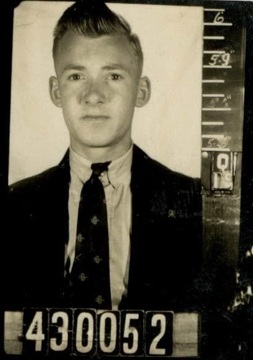Coming Soon.
PURDY, William Jack
Personal Details
| Service Number: | 430052 |
|---|---|
| Enlisted: | 4 December 1942 |
| Last Rank: | Warrant Officer |
| Last Unit: | No. 189 Squadron (RAF) No. 5 Group |
| Born: | Murrumbeena, Victoria, AUSTRALIA, 13 July 1924 |
| Home Town: | Murrumbeena, Glen Eira, Victoria |
| Schooling: | Not yet discovered |
| Occupation: | Draughtsman |
| Memorials: |
Service History
World War 2 Service
| 4 Dec 1942: | Enlisted Royal Australian Air Force, Aircraftman 2 (WW2), 430052, No. 1 Initial Training School Somers | |
|---|---|---|
| 26 May 1943: | Involvement Royal Australian Air Force, Leading Aircraftman, 430052, No. 2 Air Observers School Mount Gambier, Empire Air Training Scheme | |
| 10 Jun 1943: | Involvement Royal Australian Air Force, Warrant Officer, 430052, No. 463 Squadron (RAAF), Air War NW Europe 1939-45 | |
| 23 Aug 1943: | Involvement Royal Australian Air Force, Leading Aircraftman, 430052, No. 2 Bombing and Air Gunnery School / No. 3 Air Observers School Port Pirie, Empire Air Training Scheme | |
| 17 Oct 1943: | Involvement Royal Australian Air Force, Leading Aircraftman, 430052, Aircrew Training Units, Empire Air Training Scheme, No. 2 Air Navigation School Nhill | |
| 11 Nov 1943: | Promoted Royal Australian Air Force, Sergeant, Aircrew Training Units, Qualified Navigator | |
| 20 Nov 1943: | Embarked Royal Australian Air Force, Leading Aircraftman, 430052, 2 Embarkation Depot | |
| 9 Mar 1944: | Involvement Royal Australian Air Force, Flight Sergeant, 430052, Operational Training Units (RAF), Empire Air Training Scheme, No. 17 Operational Training Unit | |
| 16 Aug 1944: | Involvement Royal Australian Air Force, Flight Sergeant, 430052, No. 619 Squadron (RAF), Air War NW Europe 1939-45 | |
| 30 Oct 1944: | Involvement Royal Australian Air Force, Flight Sergeant, 430052, No. 189 Squadron (RAF) No. 5 Group, Air War NW Europe 1939-45 | |
| 14 Sep 1945: | Discharged Royal Australian Air Force, Warrant Officer, 430052, AIrcrew Holding Unit |
Personal Stories
Help us honour William Jack Purdy's service by contributing information, stories, and images so that they can be preserved for future generations.
Add my story









